Now open: Freshwater lake in new Bidadari Park helps protect estate from flash floods


SINGAPORE — In the newly opened Bidadari Park — once a cemetery, now a green refuge for people and migratory birds — lies a scenic lake that can also protect the Bidadari estate from flash floods.
Alkaff Lake is the centrepiece of the roughly 13ha verdant park which is nestled in the middle of the new Bidadari estate.
While it brings back memories of the Alkaff Lake Gardens of the 1930s which lasted till the 1960s, the new lake has another, more practical function: to hold storm water to prevent floods in the densely built Bidadari estate during heavy rains.
The first-of-its-kind lake, engineered by national water agency PUB, serves as a natural and biodiversity-friendly retention pond to manage the growing threat of flash floods amid climate change.
And Bidadari Park — inspired by Winnie-the-Pooh's Hundred Acre Wood — has different features at every corner, from marshlands to thick groves and rolling hills.
With Alkaff Lake being the lowest point in the estate, rainwater run-off from half of the Bidadari estate will flow into the lake. Designed to hold up to 40,000 cubic m, or 16 Olympic-sized swimming pools worth of water, its banks and nearby footpaths will be flooded when water levels reach 4m.
But before that happens, warning alerts and beacon lights will be set off to inform the public to stay away from the lake. On sunny days, the lake holds 10,000 cubic m of water, at a depth of about 1.5m.
Bidadari Park and Alkaff Lake were officially opened to the public on Sept 3.
The launch event, held at the park's Heritage Walk, was attended by National Development Minister Desmond Lee, Senior Minister of State for Sustainability and the Environment Amy Khor and Potong Pasir MP Sitoh Yih Pin.
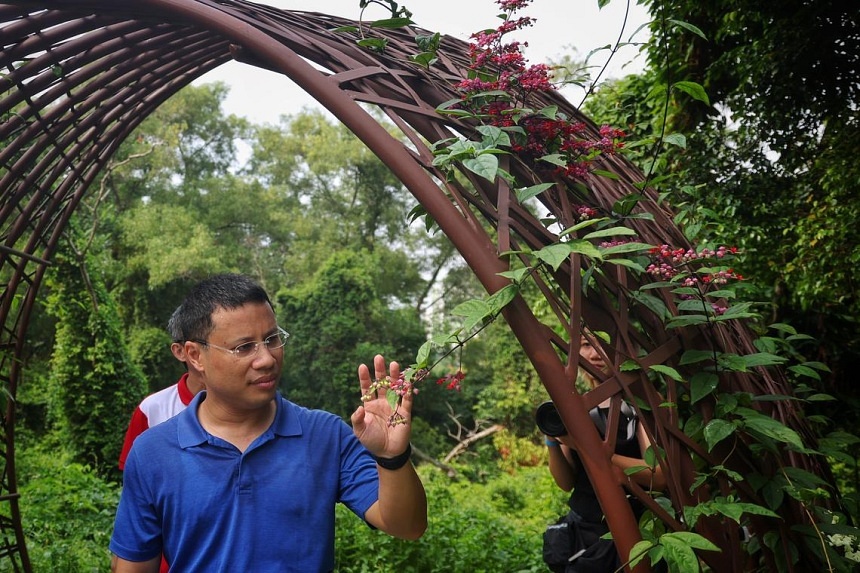
The lake shares some similarity with Kallang River @ Bishan-Ang Mo Kio Park — a concrete canal that was restored to a natural river and engineered so it can temporarily flood the park area next to it during a deluge.
The rainwater eventually flows downstream to the Marina Barrage.
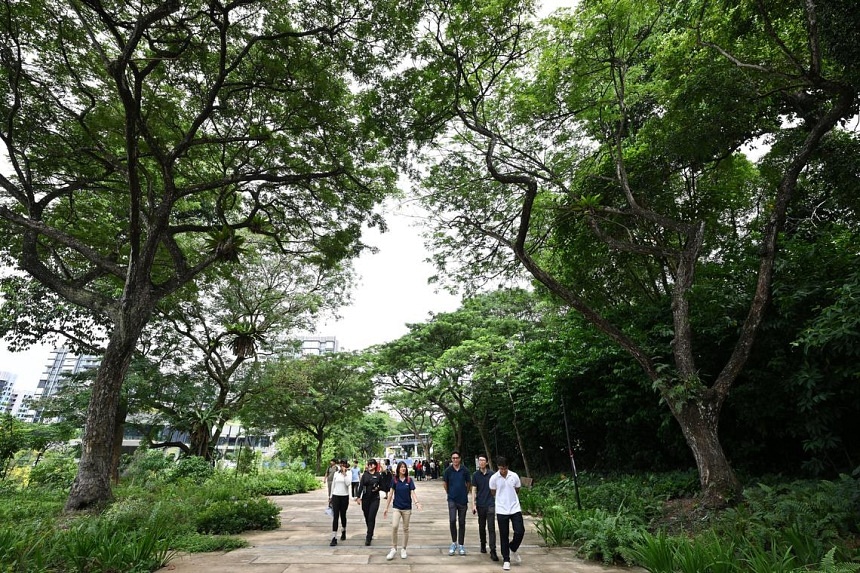
Alkaff Lake has outlet points that allow the controlled release of storm water to its next destination — an outlet drain in MacPherson sandwiched between private homes — and eventually also to the Marina Barrage.
The 1.7km-long Happy Avenue outlet drain is between 3m and 7.5m wide, and it cannot be widened further, said PUB, but Alkaff Lake will prevent flash flooding downstream of the MacPherson estate as well.
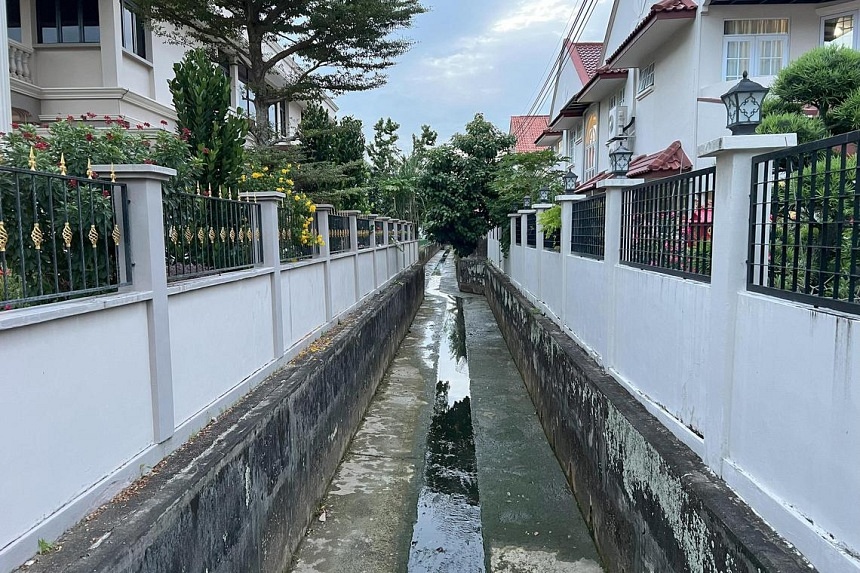
Alkaff Lake's capacity is similar to the Stamford Detention Tank in Tanglin, which can hold 38,000 cubic m of water. The underground tank helps to keep Orchard Road flood-free during intense downpours.
Before Bidadari was developed into a housing estate, it was a cemetery and columbarium, with undulating grasslands and secondary woodland. Now that the place has been turned into homes, water run-off is set to increase, making the lake a necessity.
Alkaff Lake was designed to hold more water and withstand more intense downpours, which are expected in the future amid climate change.
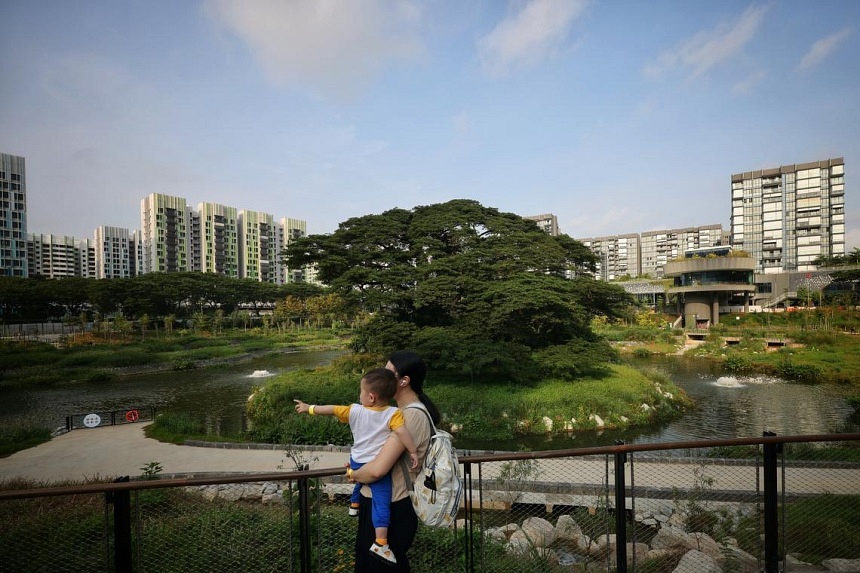
Since 2011, PUB's standards for infrastructure such as drains and canals were raised to cater for more intense rainfall events due to climate change, said its chief engineer for drainage construction, Albert Lim.
Depending on the size of a catchment, this could mean an increase of between 15 per cent and 50 per cent in drainage capacity, said Lim.
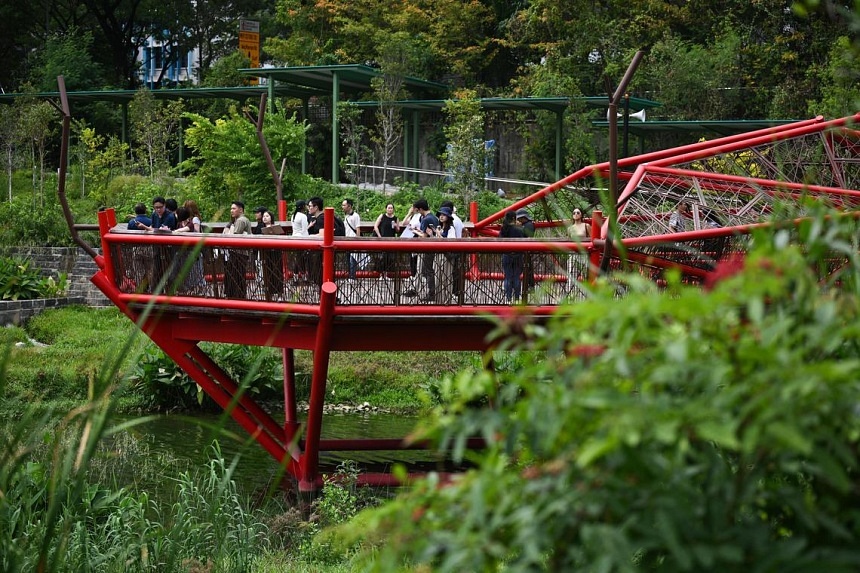
Lee said more than 75 per cent of the flats launched in Bidadari have been completed to date, with the remaining projects expected to complete by 2025.
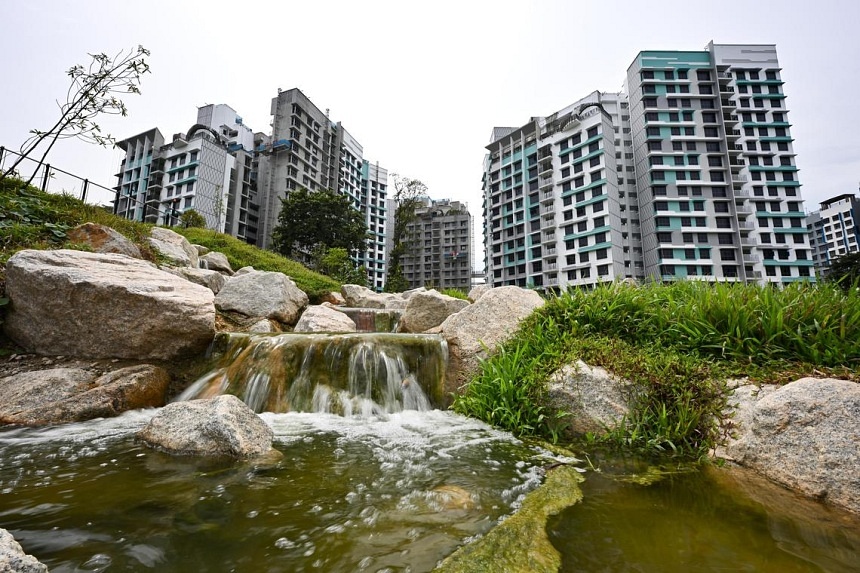
From the lake's red nest-shaped viewing deck, visitors will see a large rain tree at the centre of the lake. The tree was preserved and integrated into the lake's design.
While some residents of ParkView@Bidadari can enjoy the lake view from their flats, most Bidadari dwellers will be able to steal glances of the lush and hilly 13ha park from their windows. The newly opened park covers more than 10 per cent of the entire estate.
Children can explore a playground with a "tree house" shaped like a bird's nest and look for aquatic life in the marshlands. Residents have some 5.2km of trails for their use, including birdwatching pods along the way.
Lee highlighted two more Bidadari features that residents can look forward to: a memorial garden, expected to be built by early 2025, and a Heritage Walk, connecting Woodleigh MRT station to Bidadari Park, which is expected to be progressively completed from late 2024.
Currently, only a portion of the Heritage Walk adjacent to the lake is open to the public.
In the 2000s, Bidadari emerged as a haven for birds, especially migratory birds such as shrikes, warblers and flycatchers that come from as far as Russia to escape the winter.
Bidadari's greenery and higher terrain served as a landing point for these migratory birds to rest and refuel, said Dr Yong Ding Li, Asia's regional flyway coordinator for non-governmental organisation BirdLife International.
While conceptualising the park, the National Parks Board and Housing Board worked with the Nature Society (Singapore) to retain and enhance habitats that wildlife can rely on. One of them is the park's core habitat, the woodland.
Its existing mature trees and ficus clusters were retained, while more than 300 trees, including the tembusu and weeping fig, were transplanted in the area to form groves and a layered canopy.
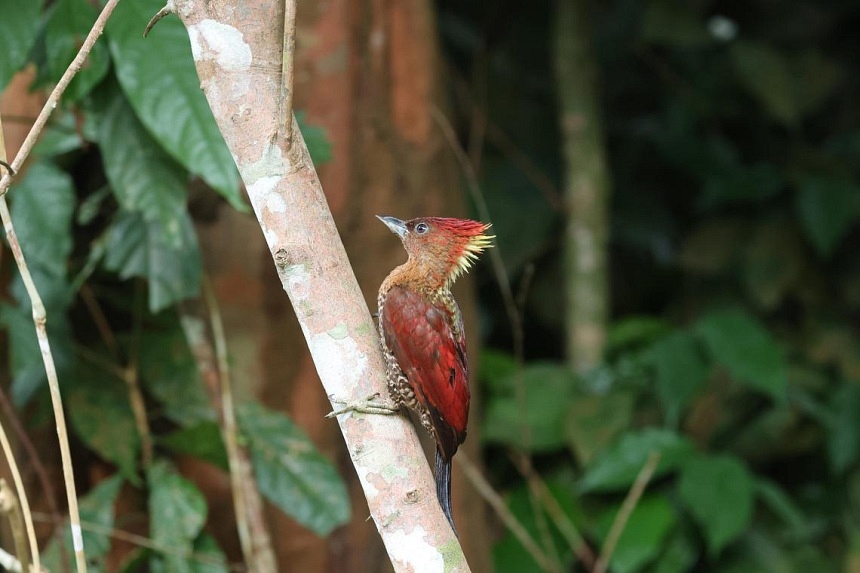
Dr Yong added: "I don't think there were areas of woodland specifically protected for these birds in Singapore until now, so Bidadari is unique in that sense. A patch of woodland that has been retained, primarily to benefit these migratory birds."
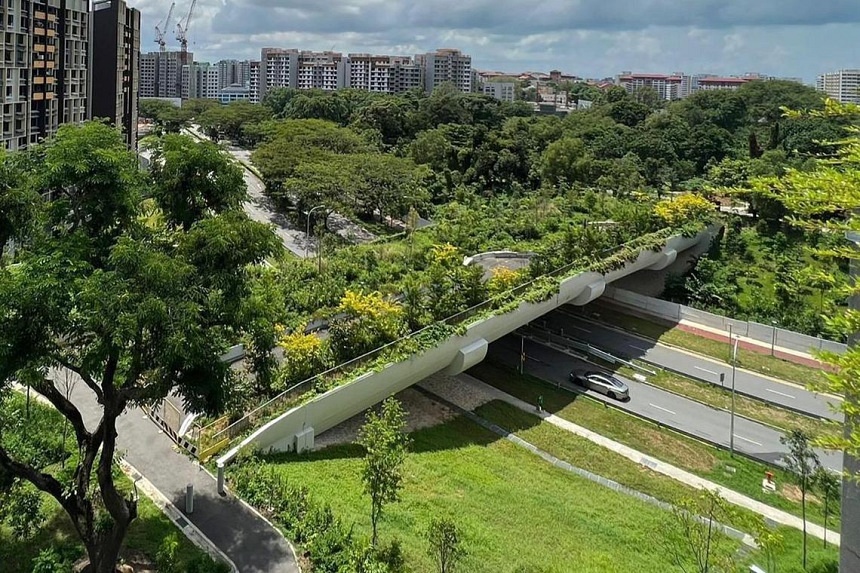
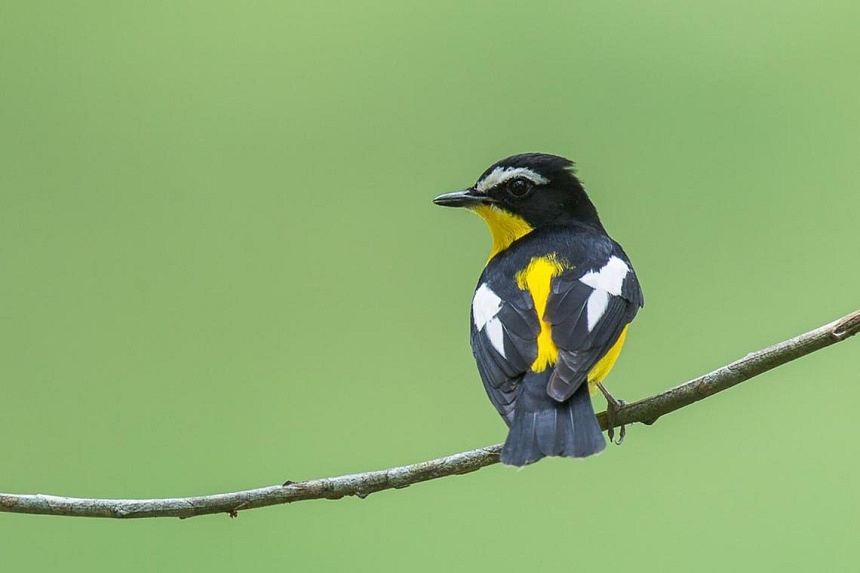
- The thicketed 1ha hillock — nestled between the Woodleigh Glen and Woodleigh Hillside flats — is the highest point of the park and a great spot for birdwatching. Bidadari is along the natural flightpath of migratory birds such as the tiger shrike and yellow-rumped flycatcher.
- A verdant 100m land bridge for people and wildlife links the hillock to the park’s Woodland area.
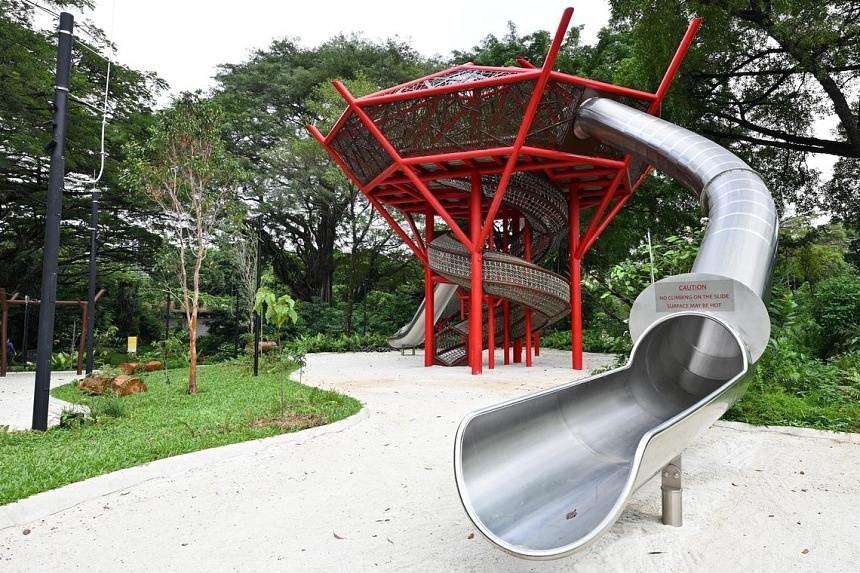
- A playground with a net bridge and slides, topped off with a nest-shaped "treehouse".
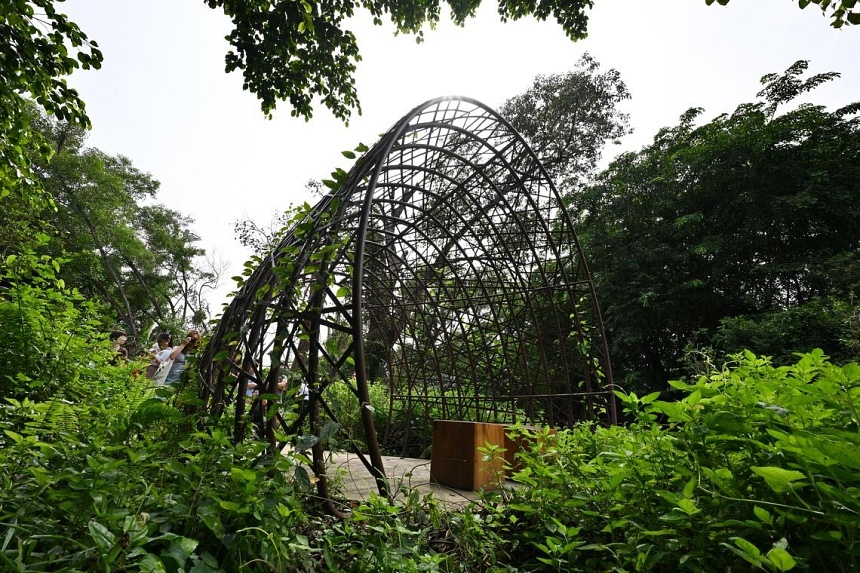
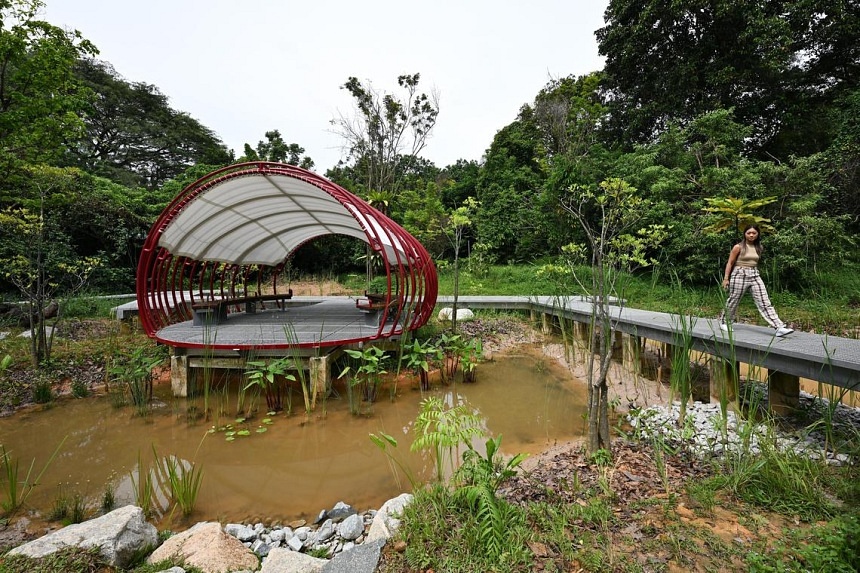
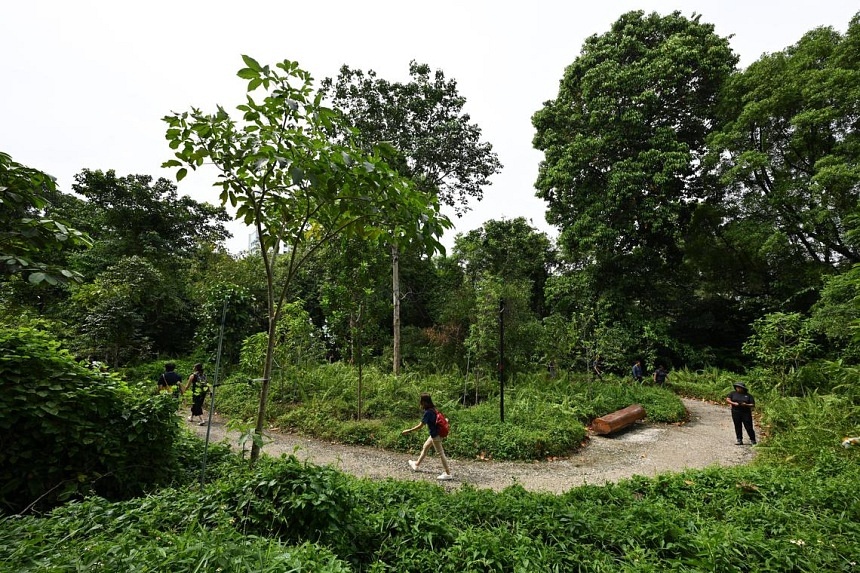
- Within the Woodland lie two shallow wetlands that are habitats for insects, frogs, birds like the white-breasted waterhen and the little egret.
- A boardwalk allows visitors to explore the marshland.
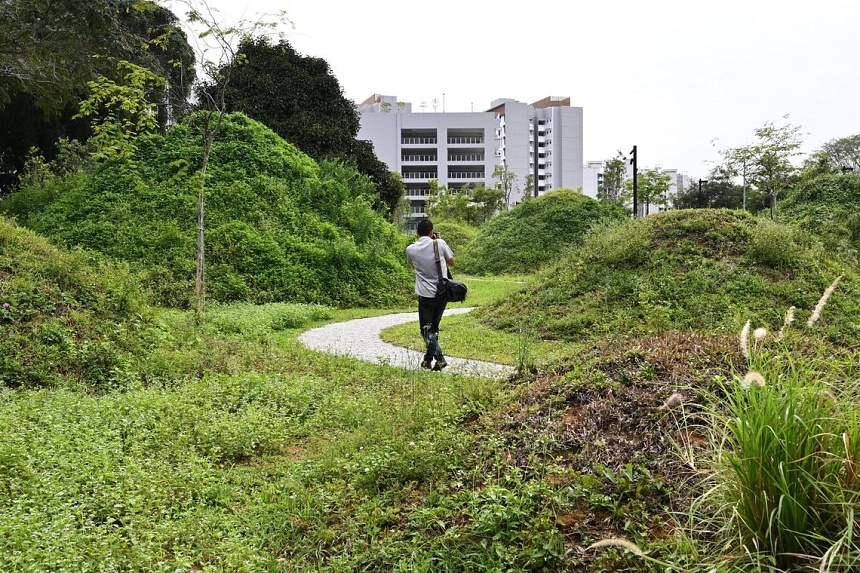
- These grassy mounds pay homage to Bidadari's unique terrain of small undulating hills.
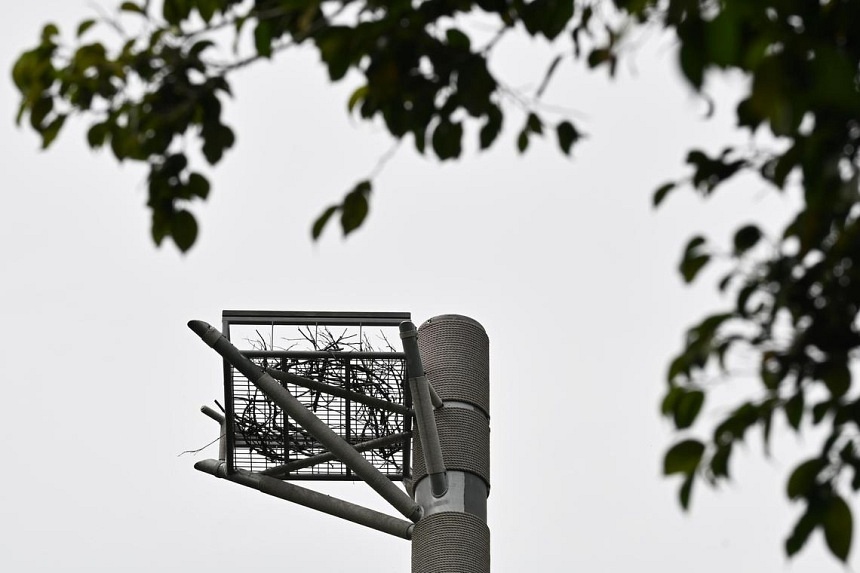
- A 20m-high nesting site allows raptors such as the white-bellied sea eagle and brahminy kite to perch.
[[nid:699829]]
This article was first published in The Straits Times. Permission required for reproduction.